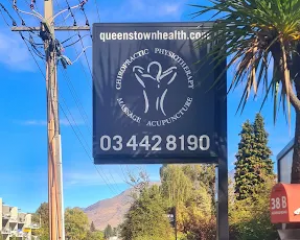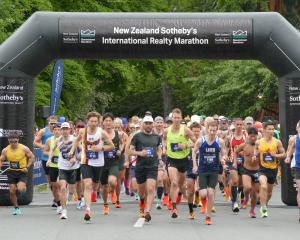More than two million passengers a year are likely to be using Queenstown International Airport by 2037, more than four times the current level, according to the latest forecasts released yesterday.
To accommodate such growth, the airport, at Frankton, needs to expand to the southeast rather than the northeast, leading to "discussions" with Remarkables Park Ltd for the required 22ha of land.
Queenstown Airport Corporation chairman Mark Taylor said new forecasts for the airport showed scheduled passengers and non-scheduled passengers - such as helicopter sightseers - would quadruple over the next 30 years.
A "vital" review of the existing plan took into account updated aircraft movement forecasts, airport noise planning, the terminal building, aviation security and associated car parking and services, helicopters, general aviation and corporate and private jets land use.
"The result of the review was a comprehensive expansion plan that caters for the different requirements of each sector, and delivers a terminal building that allows smoother flow for passengers from the kerb to boarding the aircraft," Mr Taylor said.
Studies clearly showed the southeast of the airport, rather than the northeast, was the preferred site for expansion, he said.
"Land to the northeast of the airport was previously ear-marked for the relocation of general aviation and helicopter operations.
However, operational issues and logistics weighed heavily against this option.
"It was also vital to take into consideration the weather that would affect any south-facing hangars; safety concerns around the close proximity of helicopter operators; and the need logistically to have private jets, general aviation and helicopters accessible from the main terminal via internal roads."Airport corporation chief executive Steve Sanderson said land to the southeast of the airport was considered the preferred location to accommodate general aviation, helicopters, corporate and private jets within the airport's revised master plan.
The corporation did not own all the land it required to the southeast and was in discussions with the landowner, Remarkables Park Ltd, for the required 22ha.
Speaking to the Otago Daily Times from New York last night, Remarkables Park Ltd director Alastair Porter confirmed there had been "ongoing commercial negotiations about the sale and purchase of 22ha".
The land at the centre of the discussions had originally been anticipated as a golf course-reserve development with some potentially for commercial space.
Mr Porter said discussions had stalled while he was in New York and it would likely be later next month before the process could continue, because Mr Sanderson was also due to head offshore.
"It's not time critical . . . as in weeks.
"It is time critical that we get to a decision in the end."
Mr Sanderson said the updated master plan did not mean the airport was planning new facilities in the short term.
"The master plan process is a long-term planning framework to grow against, as market conditions demand," Mr Sanderson said.
Mr Taylor said the process was vital under the airport's mandate to the community.
"Our mission statement is to provide an airport and related facilities to serve the growing needs of the community of the Lakes District.
"This meant looking to the future to create a facility of the highest possible standards to meet those needs."
Queenstown airport
What is ahead
• Scheduled aircraft movements expected to rise from 8350 this year to more than 21,000 in 2037.
• Passenger numbers, currently 700,640, expected to top 2,348,139 in the same period.
• Increased non-scheduled passenger movements to quadruple, from 142,418 to 560,650
Plans for Queenstown airport
• The updated master plan sees the current terminal building extended at both ends, with the inclusion of additional baggage-handling facilities and extensions to accommodate more aircraft stands, car parking and associated services, for example rental cars and valet.
• Ongoing security improvements which may, in the future, include screening for all passengers on scheduled flights are also considered.
• The new integrated airport design includes general aviation and helicopter hangars, a common terminal, fixed-base operations for corporate and private jets, fuel and service facilities, access to proposed taxiways and main and crosswind runways.
• There will also be internal roadways and a fire station.













